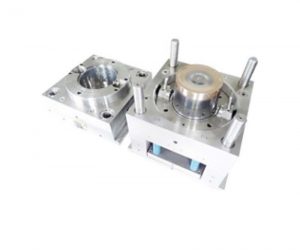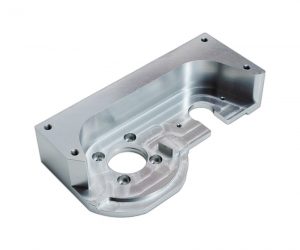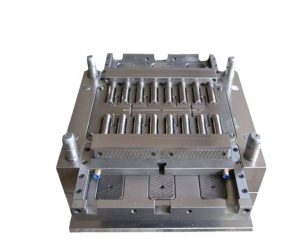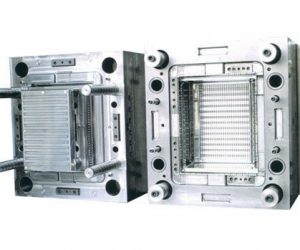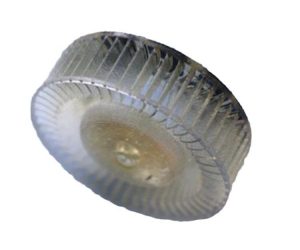The automotive industry has witnessed significant advancements in manufacturing technologies, and plastic injection molding has played a pivotal role in transforming the production of automotive parts. This highly efficient, cost-effective, and precise method has enabled the mass production of complex, high-performance automotive components. In this article, we will explore the world of plastic injection molded automotive parts, understanding how they are manufactured, the types of plastic used, and their impact on the automotive industry.
1. Introduction: The Role of Plastic Injection Molding in the Automotive Industry
In recent decades, the automotive industry has evolved rapidly due to the integration of advanced manufacturing technologies. Plastic injection molding has become a key player in this transformation, particularly in the production of parts that require high precision, complex geometries, and repeatability. The ability to create lightweight, durable, and cost-efficient parts using plastic injection molding has reshaped how vehicles are designed and built, contributing to better fuel efficiency, improved safety, and reduced manufacturing costs.
Plastic injection molding involves injecting molten plastic into a mold, where it cools and solidifies into the desired part. The versatility and efficiency of this process make it ideal for producing a wide variety of automotive components, from exterior body parts to critical under-the-hood components.
2. Plastic Injection Parts in Automotive Manufacturing
2.1 Understanding Plastic Injection Molding
Plastic injection molding is a manufacturing process that uses high pressure to inject molten plastic into a custom-designed mold. Once injected, the plastic cools and hardens, taking the exact shape of the mold. This process is ideal for producing large quantities of parts with consistent quality and precise dimensions.
Key Benefits of Plastic Injection Molding for Automotive Parts:
- Design Flexibility: Complex and intricate shapes can be created, including undercuts, textured surfaces, and fine details.
- High Precision: The process ensures tight tolerances and excellent surface finishes.
- Cost-Effective: Once the mold is designed and set up, the cost per part decreases significantly with larger production volumes.
- Efficiency: The process allows for rapid cycle times, which helps reduce overall production time.
2.2 Advantages of Plastic Injection Automotive Parts
Plastic injection molded parts offer several significant advantages over traditional manufacturing methods in the automotive industry:
- Lightweight: Plastics are significantly lighter than metals, contributing to lower vehicle weight and improved fuel efficiency.
- Corrosion Resistance: Unlike metal parts, plastic parts do not corrode, ensuring longer service life and better durability.
- Impact Resistance: Many automotive plastics, such as polypropylene and ABS, are designed to absorb impact energy, improving vehicle safety.
- Design Versatility: Injection molding can produce complex shapes with integrated features, eliminating the need for additional parts or assembly.
- Aesthetic Flexibility: Plastics can be easily colored, textured, and finished to meet aesthetic requirements.
3. Automotive Parts Manufactured with Injection Molding
Plastic injection molding is used to produce a wide range of automotive components across different sections of the vehicle. These include:
3.1 Exterior Components
Injection molding is widely used for exterior automotive components, such as:
- Bumpers: Lightweight yet durable, molded bumpers can absorb energy during collisions, protecting both the vehicle and pedestrians.
- Grilles: Grilles require strength and the ability to withstand environmental elements. Injection molding allows for precise, high-quality production.
- Side Mirrors and Mirror Housings: Mirror components require complex shapes and impact resistance, which injection molding can deliver efficiently.
- Trim Pieces: Injection molded trims, such as moldings, handles, and bezels, are often used to enhance the vehicle's aesthetic appeal.
3.2 Interior Components
Plastic injection molding is integral in manufacturing various interior automotive components, including:
- Instrument Panels: Dashboard components require both aesthetic appeal and functional features, such as air vents, switches, and display panels, all of which can be precisely molded.
- Door Panels: Injection molding allows for intricate designs, integrated storage compartments, and ergonomic shapes.
- Center Consoles: Center consoles, which often feature cup holders, storage, and controls, are produced using plastic injection molding to ensure a seamless, high-quality finish.
- Seats and Armrests: Plastic parts for seats, including seat backs, headrests, and armrests, offer comfort, durability, and design flexibility.
3.3 Engine and Underhood Components
Several under-the-hood components are manufactured using plastic injection molding due to the need for materials that can withstand high temperatures and chemical exposure:
- Air Intake Manifolds: These parts require high heat resistance, dimensional stability, and chemical compatibility, all of which are achieved with plastic injection molding.
- Fluid Reservoirs: Coolant and oil reservoirs must be designed to withstand pressure, heat, and exposure to chemicals, making plastic injection molding an ideal choice.
- Radiator Fans: Injection molded radiator fans are both lightweight and durable, improving engine cooling performance.
3.4 Lighting Systems
Plastic injection molding is essential in the production of automotive lighting systems, such as:
- Headlamp Housings: These need to withstand extreme conditions while allowing for optimal light distribution.
- Taillight Covers: Plastic molding enables the creation of intricate designs while maintaining transparency and UV resistance.
- Turn Signal Lenses: Clear, high-impact resistant lenses for turn signals are produced via injection molding.
4. Examples of Plastic Injection Molded Automotive Parts
4.1 Bumpers and Grilles
Injection molded bumpers and grilles are not only designed for visual appeal but also for function and safety. Bumpers made from polypropylene, for example, can absorb shock during a collision, minimizing vehicle damage and injury risk. Grilles are typically molded with a combination of impact-resistant materials to withstand road debris and environmental exposure.
4.2 Instrument Panels and Door Handles
Injection molding enables the production of instrument panels that incorporate intricate textures, colors, and features. The panels often include integrated switches, vents, and display screens. Similarly, door handles are molded to offer ergonomic shapes, durability, and an aesthetically pleasing finish.
4.3 Air Intake Manifolds and Fluid Reservoirs
Plastic air intake manifolds and fluid reservoirs are molded to ensure high resistance to heat and chemical exposure. These components are essential for engine functionality and need to meet demanding performance requirements, all of which are achieved using injection molding.
5. Types of Plastic Used in Automotive Parts
The choice of plastic for automotive parts depends on factors such as strength, flexibility, heat resistance, and chemical compatibility. Common plastics used in automotive injection molding include:
5.1 ABS (Acrylonitrile Butadiene Styrene)
ABS is a widely used thermoplastic in the automotive industry due to its excellent impact resistance, dimensional stability, and chemical resistance. It's commonly used for interior components like dashboards and exterior trim parts such as bumpers and wheel covers.
5.2 Polypropylene (PP)
Polypropylene is favored for its high stiffness, low density, and chemical resistance. It is often used for bumpers, interior trim panels, and battery cases due to its light weight and ability to withstand harsh conditions.
5.3 Polycarbonate (PC)
Polycarbonate is known for its exceptional impact resistance, optical clarity, and high heat resistance. It is frequently used in the production of headlamp lenses, taillight covers, and turn signal lenses, where clarity and durability are essential.
6. Understanding Plastic Injection Molding
6.1 The Injection Molding Process
The plastic injection molding process involves several stages:
- Mold Design: The mold cavity is designed to match the part geometry. This design includes channels for injecting the plastic and cooling the mold.
- Material Preparation: The chosen plastic material is fed into the injection molding machine, where it is heated and melted.
- Injection: The molten plastic is injected under high pressure into the mold cavity.
- Cooling: The plastic cools and solidifies in the mold.
- Ejection: After the plastic has solidified, the mold opens, and the part is ejected.
6.2 Mold Design and Material Preparation
Mold design is critical for ensuring the quality of the final part. The mold must be created with high precision to accommodate the complex geometries and ensure accurate part formation. Material preparation involves selecting the appropriate plastic resin and ensuring it is properly heated and mixed before injection.
6.3 Injection, Cooling, and Ejection
Once the molten plastic is injected into the mold, it rapidly cools and solidifies. The cooling time depends on factors like part thickness and the type of plastic used. After cooling, the mold is opened, and the finished part is ejected, ready for inspection or further processing.
7. Conclusion
Plastic injection molding has revolutionized the automotive industry by enabling the efficient production of a wide variety of parts with complex shapes, high precision, and cost-effectiveness. From bumpers and instrument panels to engine components and lighting systems, injection molding allows manufacturers to create durable, lightweight, and aesthetically pleasing parts that meet the industry's high standards.
With its numerous advantages, such as design flexibility, corrosion resistance, and ability to reduce vehicle weight, plastic injection molding continues to play an essential role in modern automotive manufacturing. As technology advances, the role of plastic injection molding in automotive production will likely expand, offering even more innovative solutions for the industry.
8. In-Depth Answers: Plastic Injection Automotive Parts
8.1 What automotive parts are made with injection molding?
Injection molding is used to produce a wide range of automotive parts, including bumpers, grilles, interior trim pieces, air intake manifolds, lighting components, fluid reservoirs, and engine covers.
8.2 What plastic is in automotive parts?
Common plastics in automotive parts include ABS, polypropylene (PP), polycarbonate (PC), and polyamide (PA). These materials offer properties such as impact resistance, heat resistance, and chemical stability, making them ideal for various automotive applications.
8.3 What is plastic injection?
Plastic injection refers to the process of injecting molten plastic into a mold cavity under high pressure to create a solid part. The process allows for precise and complex shapes to be molded, making it ideal for high-volume production of automotive components.
